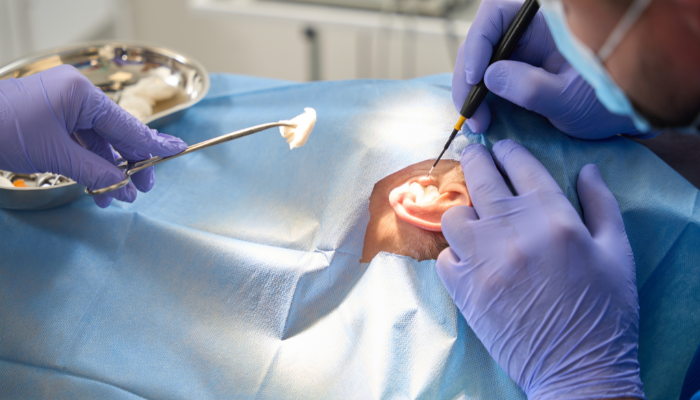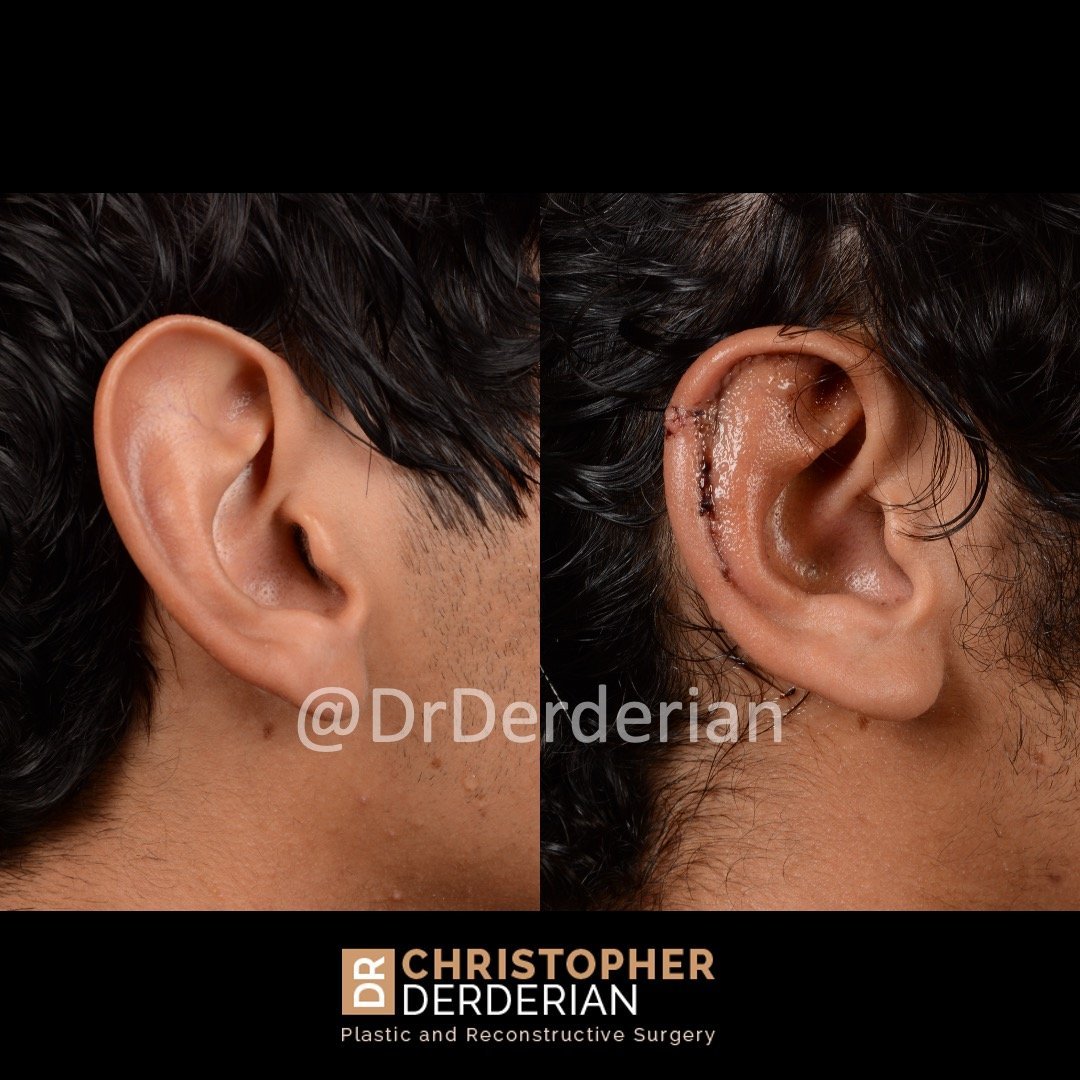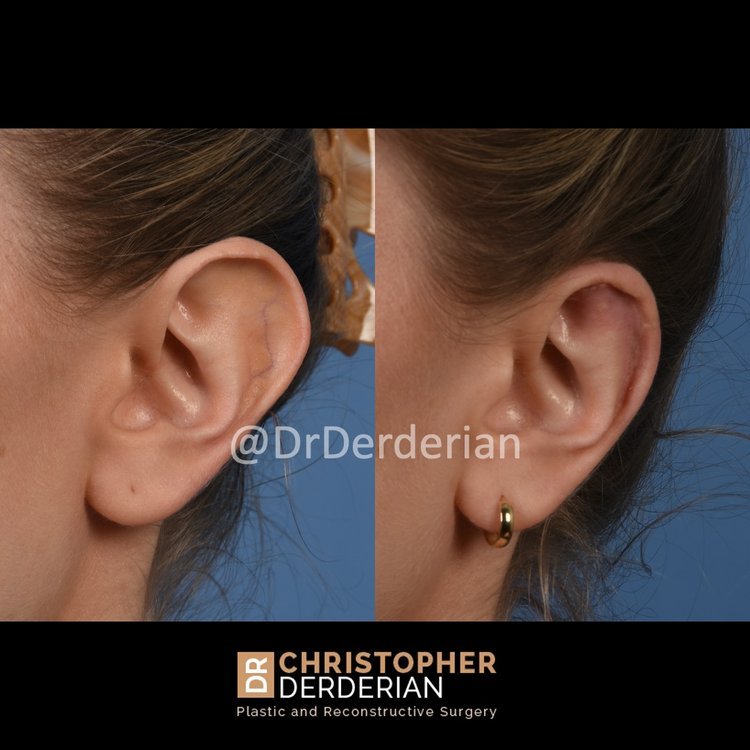Achieving Proportion: How Ear Reduction Surgery Can Enhance Your Profile
Ear reduction surgery, also known as reduction otoplasty, is designed to create a more harmonious balance between the size of the ears and the overall proportions of the face.
For individuals with prominent or oversized ears, this procedure offers a path to increased confidence and a more pleasing appearance.
By reducing the size of the ears, ear reduction surgery can help patients achieve a well-balanced profile and enhance their overall aesthetic.
Ear Reduction Surgery Overview
Ear reduction surgery is a specialized form of plastic surgery that focuses on resizing and reshaping large or prominent ears to create a more natural appearance.
Unlike traditional ear pinning, which addresses protruding ears, this cosmetic procedure targets the size of the ears by removing excess ear cartilage and skin. It is ideal for individuals who feel their ears are disproportionately large compared to the rest of their face.
The procedure is typically performed on an outpatient basis under local or general anesthesia, depending on the complexity of the surgery and the patient's preferences.
A skilled facial plastic surgeon will carefully evaluate the patient’s ear cartilage, earlobes, and overall facial structure to create a customized plan that delivers optimal results.
Why Consider Ear Reduction Surgery?
People of all ages opt for ear reduction surgery to address physical and emotional concerns. Oversized ears can lead to self-consciousness, teasing during childhood, and dissatisfaction with appearance in adulthood. Ear reduction surgery helps alleviate these issues by:
Reducing the size of prominent ears.
Enhancing overall facial symmetry and balance.
Boosting self-esteem and confidence.
Improving the proportion between the ears and other facial features, such as the head and face.
Techniques and Procedure Details Explained
Reduction otoplasty involves precise surgical techniques tailored to the unique needs of each patient. Some common methods include:
Cartilage Removal and Reshaping: Excess ear cartilage is surgically removed or reshaped to reduce the size of the ears. This ensures that the new ear structure maintains a natural look.
Incisions and Sutures: The surgeon makes small incisions, typically hidden behind the ears, to access and modify the cartilage. Sutures are used to secure the new shape and ear bandages are placed after surgery to protect the ears.
Earlobe Reduction: For individuals with large or stretched earlobes, earlobe reduction may be incorporated into the procedure to further enhance the appearance of the ears.
Combination with Ear Pinning: In some cases, ear reduction surgery is combined with ear pinning to address both size, uneven ears, and protrusion for a comprehensive result.
The Day of Surgery
On the day of surgery, patients can expect a streamlined process. After arriving at the office or hospital, the surgical team will prepare the patient for the procedure.
Depending on the surgical plan, local anesthesia or general anesthesia will be administered. The surgery typically takes one to two hours, after which patients can return home with detailed post-operative care instructions.
How Ear Reduction Surgery Differs from Otoplasty
While ear reduction surgery and otoplasty share similarities, they address different concerns:
Ear Reduction Surgery: Focuses on reducing the size of large ears and reshaping them for improved proportions. It often involves excess cartilage removal and modification.
Otoplasty (Ear Pinning): Candidate for otoplasty have prominent ears that stick out from the head. This procedure repositions the ears closer to the head without significantly altering their size.
By targeting specific aesthetic concerns, ear reduction surgery offers a unique solution for patients seeking to enhance their facial harmony.
Benefits of Ear Reduction Surgery
Ear reduction surgery provides numerous benefits for patients, including:
Enhanced Appearance: Smaller, more proportionate ears contribute to a balanced and attractive profile.
Improved Confidence: Many patients experience a boost in self-esteem after addressing a feature they were self-conscious about.
Customized Results: The procedure is tailored to the patient’s individual anatomy and goals, ensuring natural-looking outcomes.
Cosmetic Ear Surgery: Recovery and Outlook
Recovery from ear reduction surgery is typically straightforward. Patients can expect:
Bandages and Headband: After the procedure, the ears will be wrapped in bandages to protect the surgical area and promote healing. A headband may be recommended to secure the ears during the healing process.
Mild Discomfort: Some swelling, bruising, and discomfort are normal in the first few days. Pain can be managed with prescribed medications.
Sutures and Stitches: Sutures are usually removed within one to two weeks, depending on the technique used.
Back to Daily Activities: Most patients can return to work, school, or other activities within a week, although strenuous exercise should be avoided for a few weeks.
Long-Term Results
The results of ear reduction surgery are permanent, provided that the ears are not subjected to trauma or injury. Patients often report feeling more satisfied with their appearance and experience improved social interactions due to increased confidence.
Risks, Complications, and Side Effects
As with any plastic surgery, ear reduction surgery carries potential risks and side effects. These may include:
Infection at the incision sites.
Scarring, which is typically minimal and hidden behind the ears.
Changes in skin or cartilage sensation.
Asymmetry or dissatisfaction with the results (rare when performed by a skilled surgeon).
It is essential to follow all post-operative care instructions and attend follow-up appointments to ensure proper healing and address any concerns promptly.
Planning and Consultation with a Surgeon
Before schedule cosmetic ear surgery, a consultation is a crucial first step for patients considering ear reduction surgery. During the appointment, the plastic surgeon will:
Evaluate the patient’s ears and facial proportions.
Discuss goals and expectations.
Explain the procedure, techniques, and recovery process in detail.
Address any questions or concerns.
In summary, by reshaping and resizing the ears, ear reduction surgery offers patients a way to improve facial harmony, enhance appearance, and boost their self-confidence. For those dissatisfied with the size or prominence of their ears, this transformative procedure provides a lasting solution that can help individuals aligns with their aesthetic goals.





